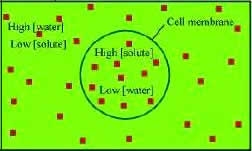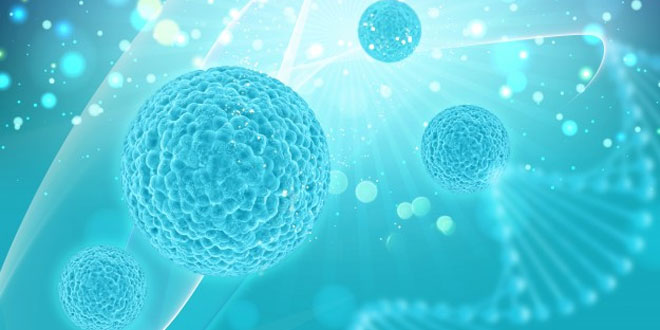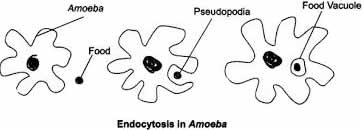Question: Where are proteins synthesized inside the cell?
Answer: Ribosomes are the site for protein synthesis. Ribosomes are very small structures found either in a free state, suspended in the cytoplasm, or attached to the surface of the endoplasmic reticulum. They are composed of ribonucleic acids and proteins.
Question: What would happen if the plasma membrane ruptures or breaks down?
Answer: If the plasma membrane of a cell is ruptured, then the cell will die. The plasma membrane regulates the movement of substances in and out of the cell by diffusion or osmosis. Thus, if the plasma membrane is ruptured, then the cell might leak out its contents.
Question: What would happen to the life of a cell if there was no Golgi apparatus?
Answer: If there was no Golgi apparatus in the cell, then most activities performed by the Golgi apparatus will not take place.
- Membranes of the Golgi apparatus are often connected to ER membranes. It collects simpler molecules and combines them to make more complex molecules. These are then packaged in small vesicles and are either stored in the cell or sent out as per the requirement. Thus, if the Golgi apparatus is absent in the cell, then the above process of storage, modification, and packaging of products will not be possible.
- The formation of complex sugars from simple sugars will not be possible as this takes place with the help of enzymes present in Golgi bodies.
- The Golgi apparatus is involved in the formation of lysosomes or peroxisomes. Thus, if the Golgi body is absent in a cell, the synthesis of lysosomes or peroxisomes will not be possible in the cell.
Question: Which organelle is known as the powerhouse of the cell? Why?
Answer: Mitochondria are known as the powerhouse of cells. Mitochondria create energy for the cell, and this process of creating energy for the cell is known as cellular respiration. Most chemical reactions involved in cellular respiration occur in the mitochondria. The energy required for various chemical activities needed for life is released by the mitochondria in the form of ATP (Adenosine triphosphate) molecules. For this reason, mitochondria are known as the powerhouse of cells.
Question: Where do the lipids and proteins constituting the cell membrane get synthesized?
Answer: Lipids and proteins constituting the cell membrane are synthesized in the endoplasmic reticulum.
SER (Smooth endoplasmic reticulum) helps in the manufacturing of lipids.
RER (Rough endoplasmic reticulum) has particles attached to its surface, called ribosomes. These ribosomes are the site for protein synthesis.
Question: How does an Amoeba obtain its food?
Answer: Amoeba obtains its food through the process of endocytosis. The flexibility of the cell membrane enables the cell to engulf the solid particles of food and other materials from its external environment.
Question: What is osmosis?
Answer: The movement of water molecules from a region of high concentration to a region of low concentration through a selectively permeable membrane is called osmosis. It is a special case of diffusion, where the medium is water.
For example, if the medium surrounding the cell has a higher water concentration than the cell i.e., if the solution is a dilute solution, then the cell will gain water by osmosis.

Movement of water inside the cell
Question: Carry out the following osmosis experiment: Take four peeled potato halves and scoop each one out to make potato cups. One of these potato cups should be made from a boiled potato. Put each potato cup in a trough containing water. Now,
(a) Keep cup A empty
(b) Put one teaspoon sugar in cup B
(c) Put one teaspoon salt in cup C
(d) Put one teaspoon sugar in the boiled potato cup D.
Keep these for two hours. Then observe the four potato cups and answer the following:
(1) Explain why water gathers in the hollowed portion of B and C.
(2) Why is potato A necessary for this experiment?
(3) Explain why water does not gather in the hollowed out portions of A and D.
Answer: Discussion Experimental set up
- Water gathers in the hollowed portions of set-up B and C because water enters the potato as a result of osmosis. Since the medium surrounding the cell has a higher water concentration than the cell, the water moves inside by osmosis. Hence, water gathers in the hollowed portions of the potato cup.
- Potato A in the experiment acts as a control set-up. No water gathers in the hollowed portions of potato A.
- Water does not gather in the hollowed portions of potato A because potato cup A is empty. It is a control set-up in the experiment. Water is not able to enter potato D because the potato used here is boiled. Boiling denatures the proteins present in the cell membrane and thus, disrupts the cell membrane. For osmosis, a semi-permeable membrane is required, which is disrupted in this case. Therefore, osmosis will not occur. Hence, water does not enter the boiled potato cup.
 Class Notes NCERT Solutions for CBSE Students
Class Notes NCERT Solutions for CBSE Students




